Research Arsenal Spotlight 11: US Cavalry Returns
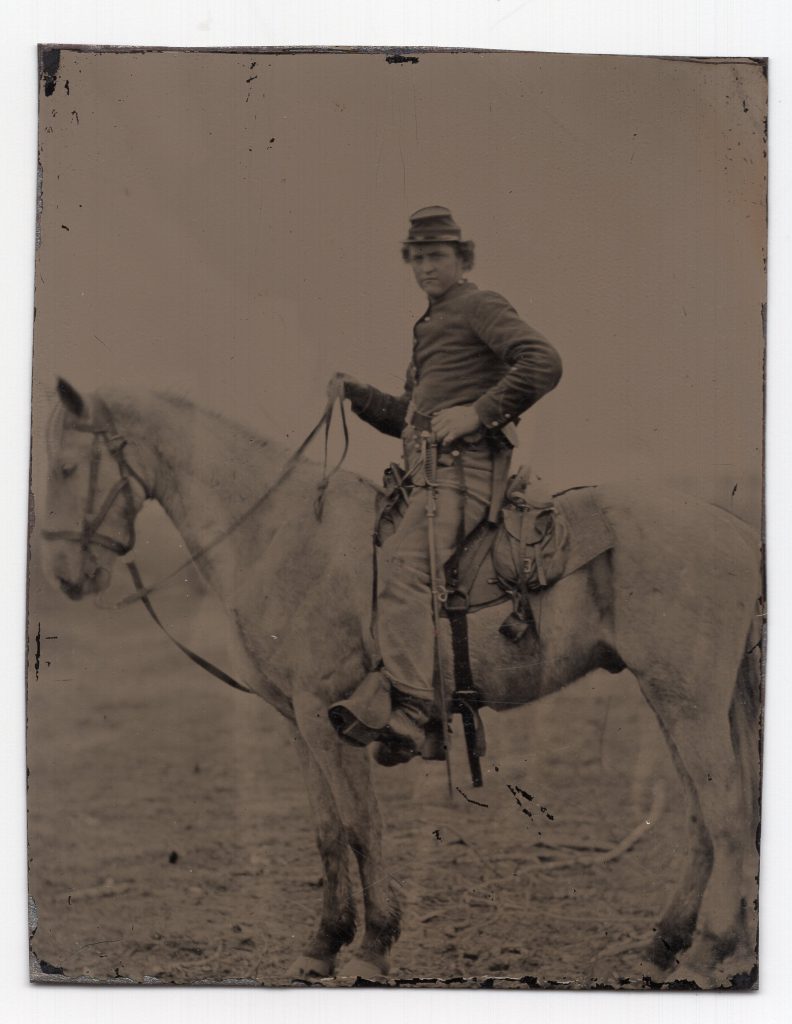
The Research Arsenal is proud to announce that we recently uploaded all of the Civil War era cavalry returns for the 1st-6th US Cavalry. These returns encompass rolls 4, 5, 18, 29, 40, 41, 51, 52, and 61 of the National Archives’ M-744 microfilm collection.
What are US Cavalry Returns?
The US Cavalry returns are documents that were filed monthly by regimental commanders about the status of their regiments. During the Civil War era, US Cavalry returns contained information about the officers and enlisted men present and absent from a regiment and how those numbers changed from the previous month’s return.
The US Cavalry returns also list the regiment’s current station or post and often contain a record of events for the past month. These events are usually a list of the regiment’s movements and any skirmishes or battles it participated in. Finally, they list the names of men on extra duty and the duty they were assigned.
In addition to the monthly US Cavalry returns, there are also annual (and sometimes quarterly) reports of alterations in the regiment which can serve as a summary of the changes that occurred throughout the year (or quarter). There are also casualty reports listing the names of soldiers killed, wounded, and captured during battles.
How Can I Access the US Cavalry Returns?
You can access all of the Civil War era US Cavalry Returns for the 1st-6th US Cavalry with a Research Arsenal membership. Once you have an active membership, follow the steps below to access the US Cavalry Returns.
- On the Libraries screen, click the “Search NARA Microfilm” tile on the bottom row.
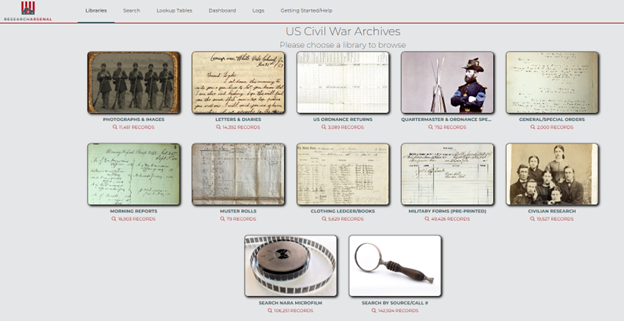
- On the “call numbers” dropdown menu, select “M-744″
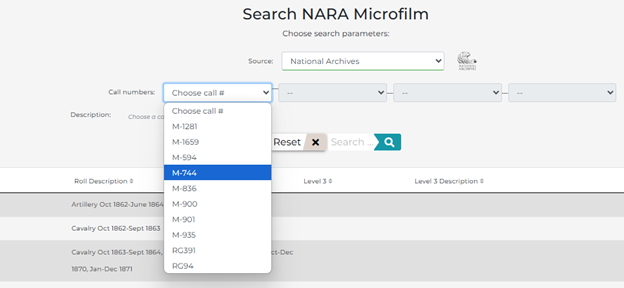
- Double click a microfilm roll from the list below to view that particular roll of microfilm or click the “search” button to view all the rolls at once.
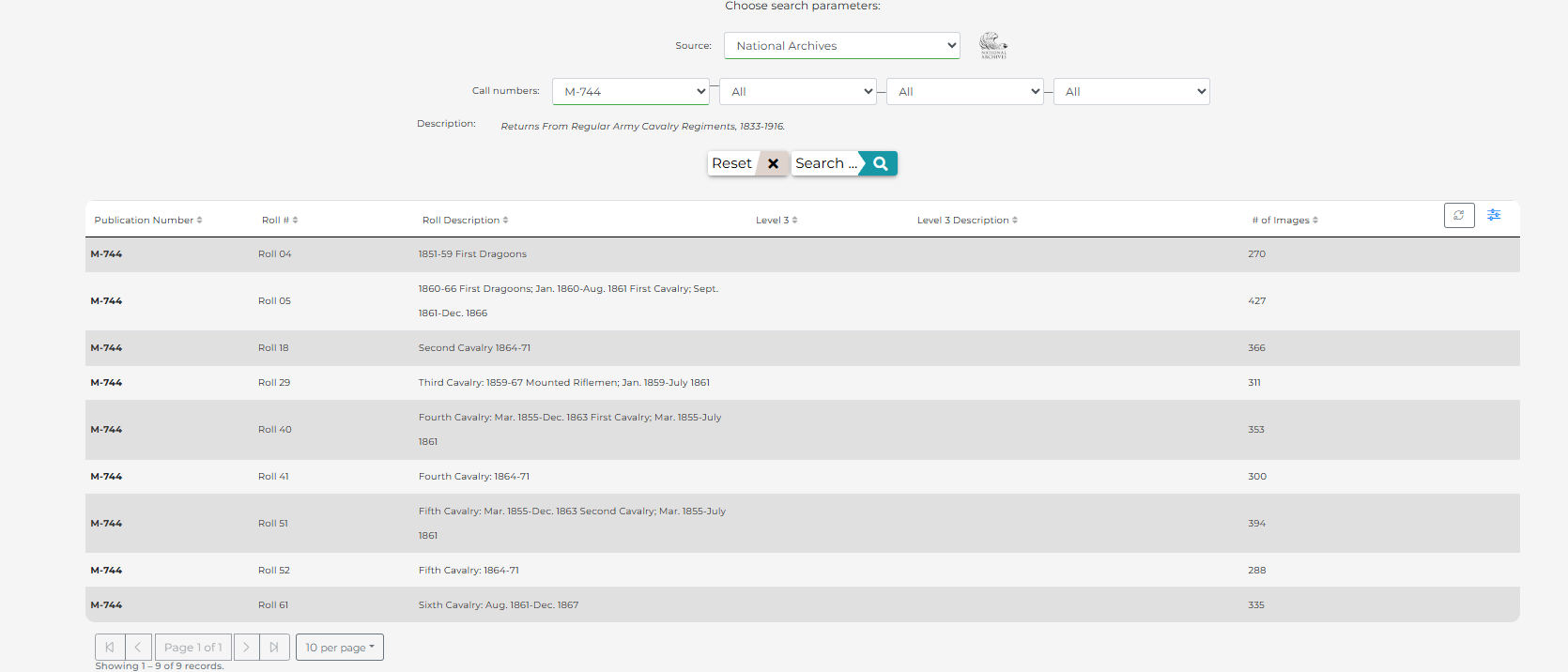
- Enjoy browsing the microfilm collection.
What information is on US Cavalry Returns?
The purpose of the US Cavalry returns was to keep an accurate record of the strength of each regiment in terms of manpower. It also provided a detailed account of where any officers and enlisted men not on duty actually were, whether it was serving on some sort of extra duty, absent sick, deserted, or any other reason.
US Cavalry returns are useful to researcher and historians because they can give a bird’s eye view of the regiment as a whole, while also giving details about individuals in it. While men on regular duty aren’t listed by name, anyone absent for any reason is listed in the remarks section along with an explanation of why they are absent.
Let’s take a look at a return to dive deeper into all they contain.
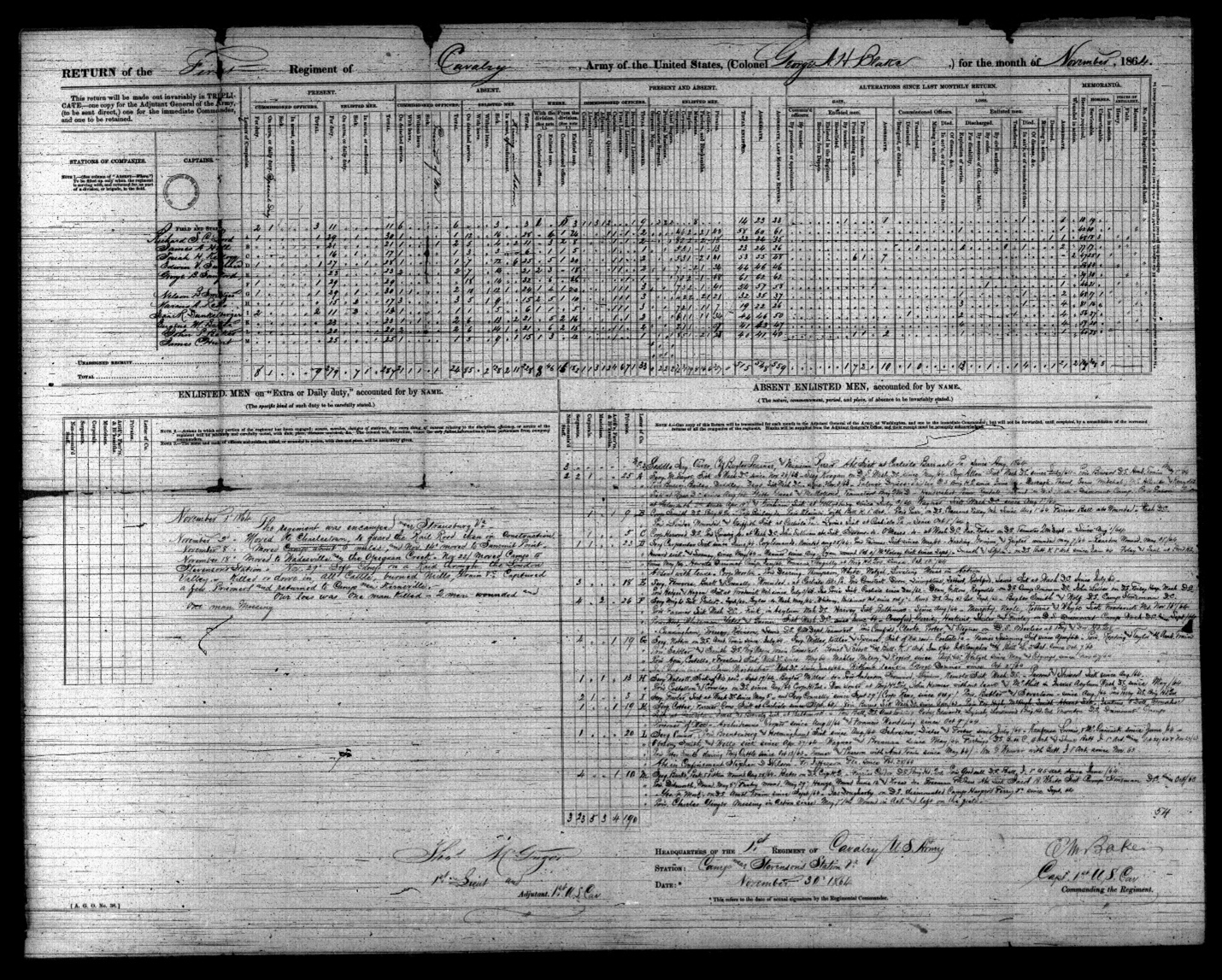
The first page of the US Cavalry Returns can be roughly divided into four sections: the top section listing the numbers of men present and absent and how those number changed since the last return, the box for listing the enlisted men on extra or daily duty, an accounting of all the absent enlisted men, and a small box at the bottom for identifying the regiment and its station.
Men Present and Absent: Taking up the entire top half of the paper, this gives an accounting of officers and enlisted men present and absent from the regiment and is broken down by company.
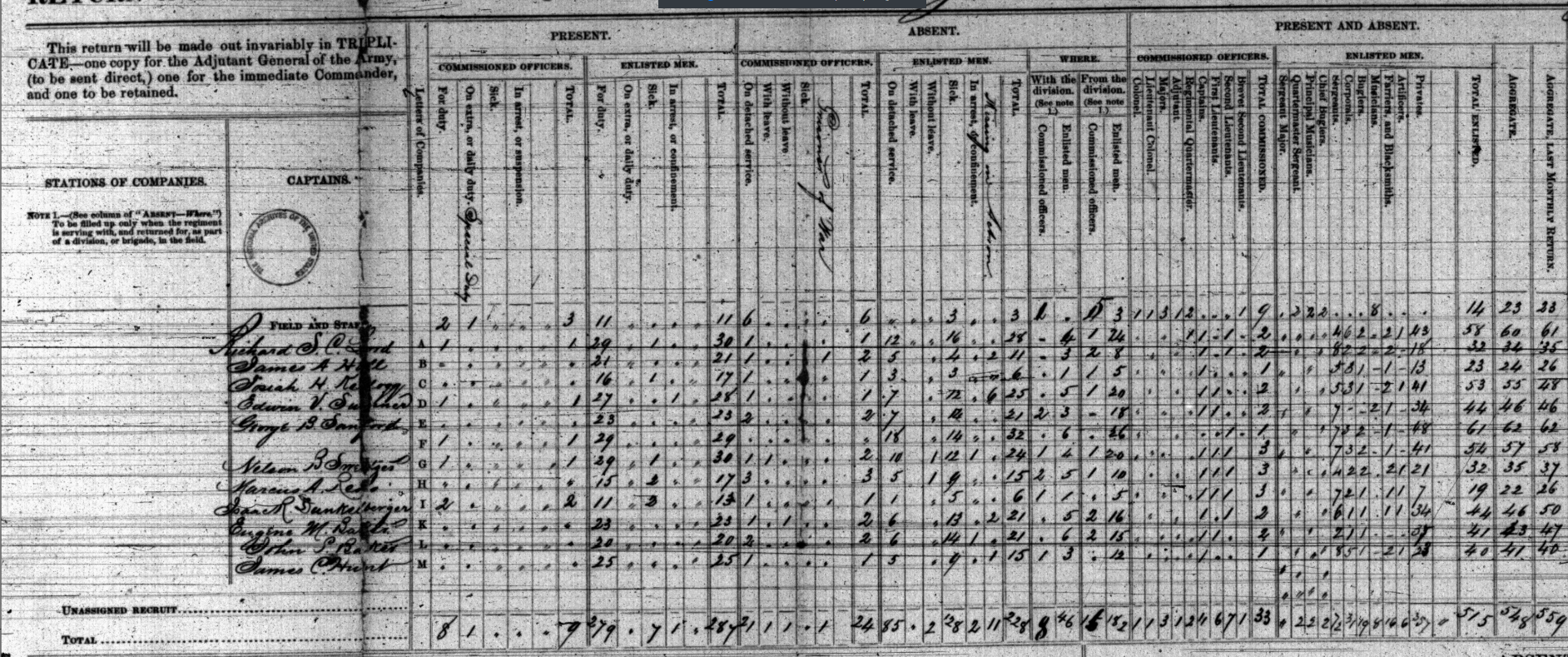
The “Present” category is broken down into several subcategories: “For duty,” “On extra or daily duty,” “Sick,” and “In arrest, or suspension.”
Similarly, there are several subcategories of absences: “On detached service,” “[absent] with leave,” “[absent] without leave,” “sick,” and “in arrest, or confinement.” There were also blanks left for commanders to fill out additional reasons for absences, and the image above shows the handwritten categories “Prisoner of War” and “Missing in Action.”
At the bottom of the box, a running total of each subcategory across all the companies can be found.
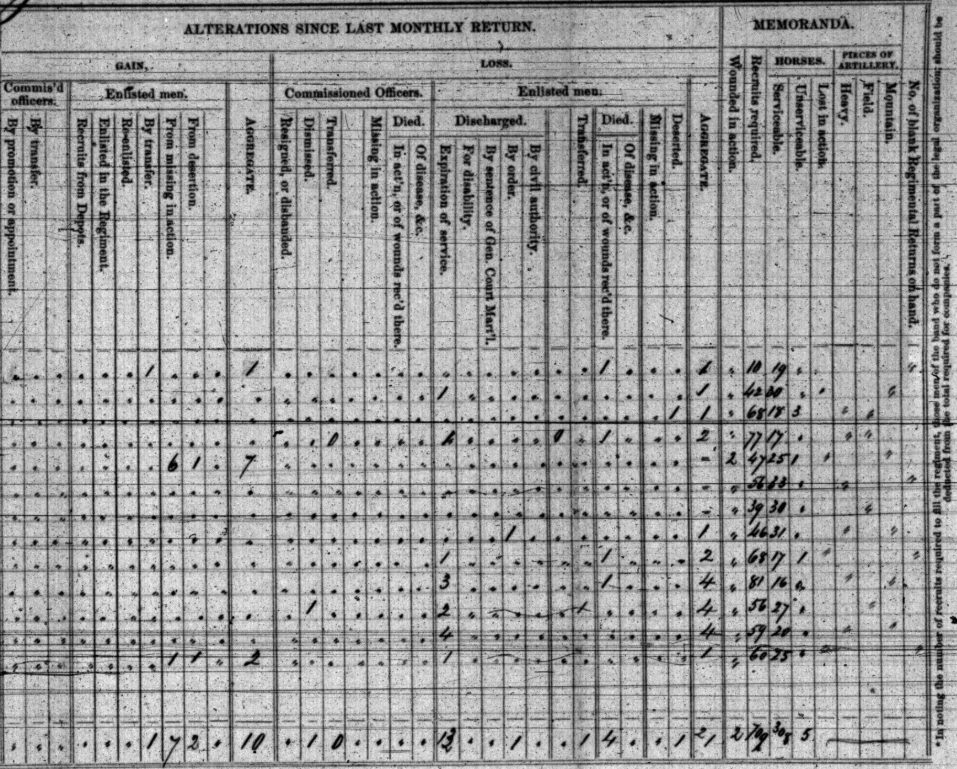
The second half of the box on the right half of the page is dedicated to tabulating all the changes between the current return and that of the previous month. It is broken down first into the categories of men gained or lost, and then further subdivided into the reason the men joined or left the regiment.
Reasons for gaining men include: (officers) “by appointment,” “by transfer,” “recruits from depot,” “enlisted in the regiment,” “re-enlisted,” “from missing in action,” and “from desertion.”
Reasons for the loss of men include: (officers) “Resigned, or disbanded,” “dismissed,” “transferred,” “missing in action,” “died in action or of wounds received there,” “died of disease, etc,” “discharge for expiration of service,” “discharge for disability,” “discharge by sentence of general court martial,” “discharge by order,” “discharge by civil authority,” “missing in action,” and “desertion.
Finally, in the memoranda section on the far right of the page there is a small section to account for horses and artillery in the regiment.
Enlisted Men on extra duty: The bottom left of the front page contains a section for all of the enlisted men serving on extra duty to be accounted for by name with a description of the duty they’re performing.
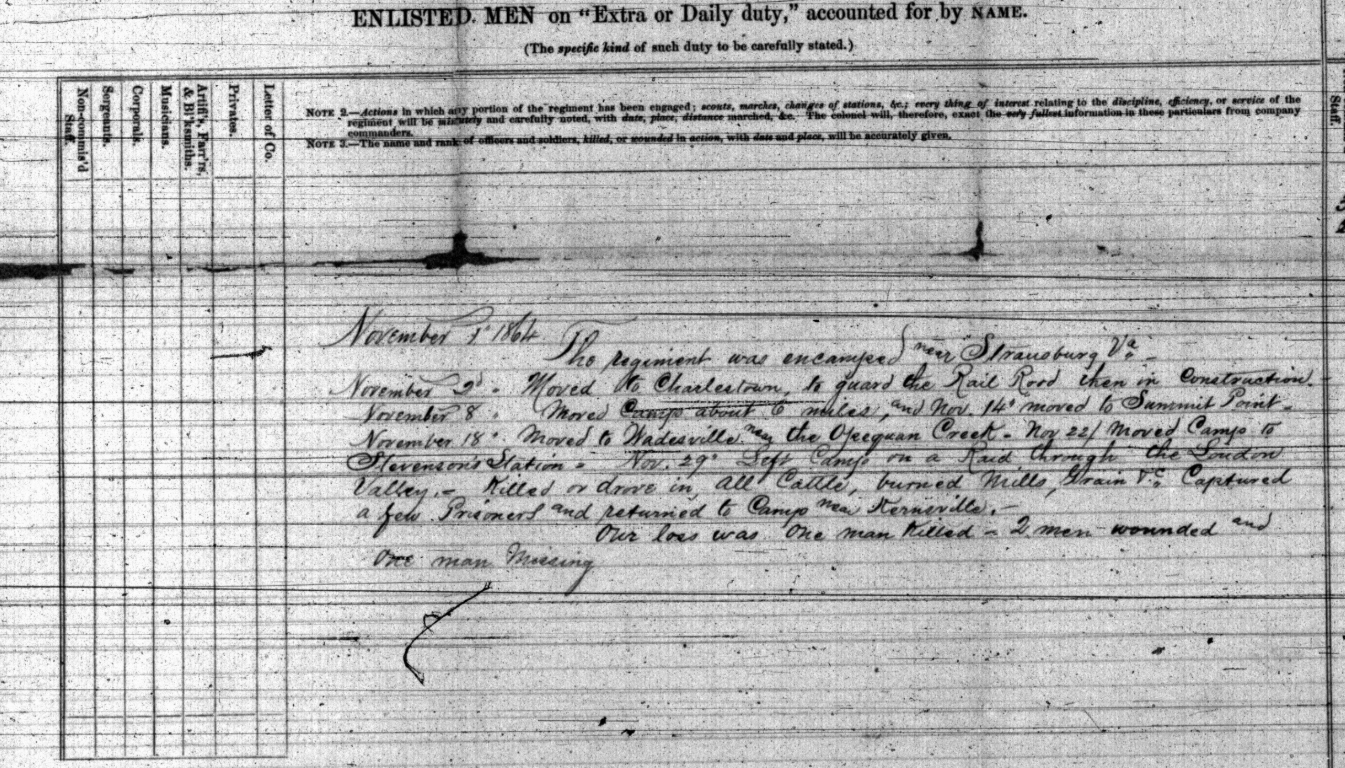
As shown in the image above, not every month saw enlisted men doing extra duty. The space was frequently used instead for writing a summary of the regiment’s actions and movements in the last month, as seen in the example above which states:
“The regiment was encamped near Strausburg, Va November 2d. Moved to Charlestown, to guard the Rail Road then in construction. November 8 Moved camp about 6 miles, and Nov. 14 moved to Summit Point. Nov 18 Moved to Wadesville near the Opequon Creek. Nov 22/ Moved camp to Stevenson’s Station. Nov 29 Left camp on a Raid through the Loudon Valley. Killed or drove in all Cattle, burned Mills, Grain &c. Captured a few prisoners and returned to Camp near Kernsville.
Our loss was one man killed, 2 men wounded, and one man missing.”
Absent Enlisted Men: The last major section on the first page is an account of all enlisted men absent from the regiment.

This section of the return is frequently very dense with information about the absent men from a regiment. The boxes on the left help organize the long list by company and by keeping count of the various ranks of the men absent.
The first line of the page is representative of what a typical entry looks like: “Saddle Serg. Oliver, Chief Bugler Peasner, and Musician Rerrot Abs. Sick at Carlisle Barracks Pa since Aug. 1864”
Regiment and Station: The final section on the first page of the return is a small section for the regiment, it’s station, and the date of the return. It’s a quick and easy way to identify the return you’re looking at.

The second page of the US Cavalry Return contains two principal sections: Commissioned officers present and absent accounted for by name, and the alterations among enlisted men since the last return.
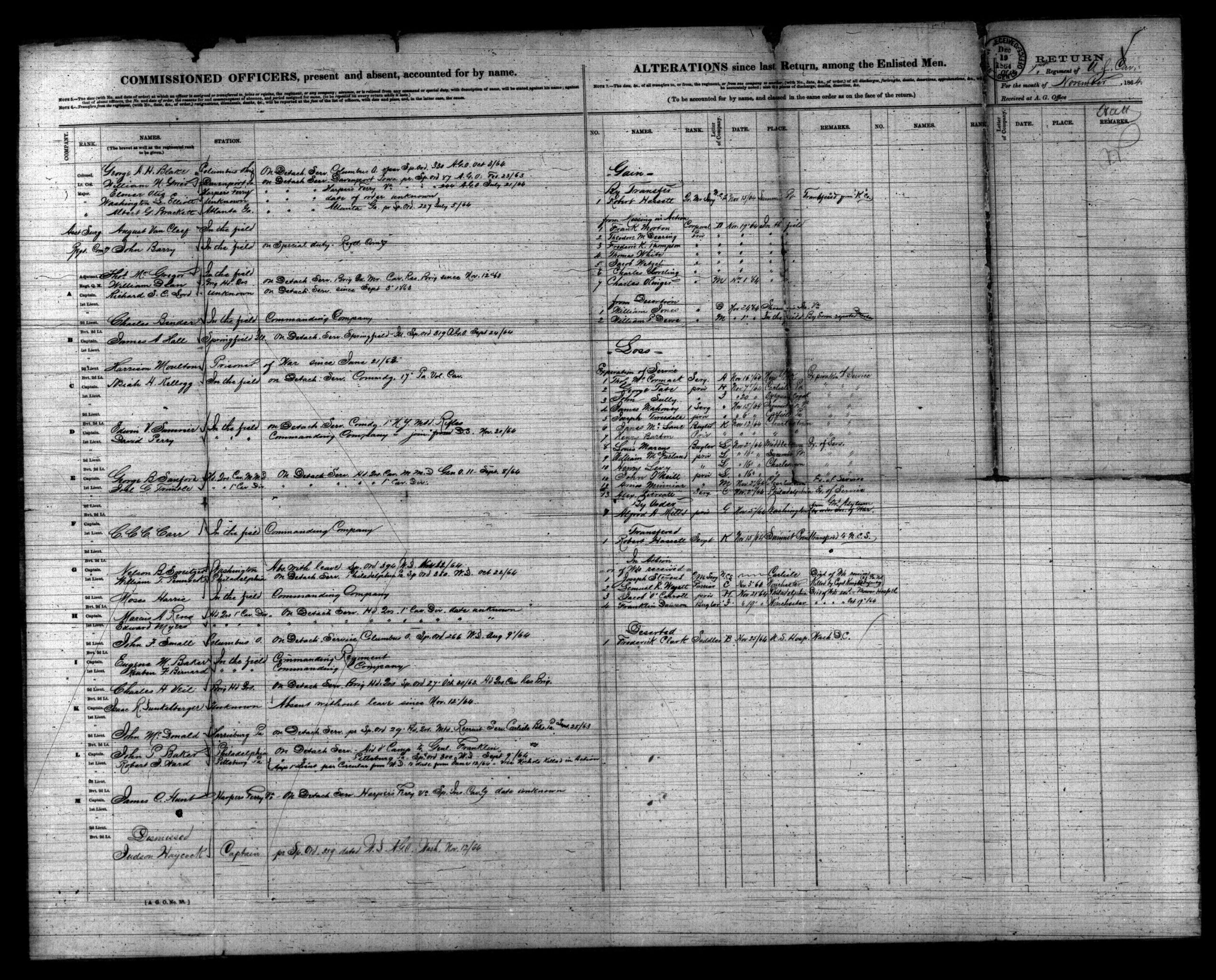
Commissioned Officers Present and Absent: The first half of page 2 of the US Cavalry Return leaves space for every officer in the regiment to be accounted for by name.
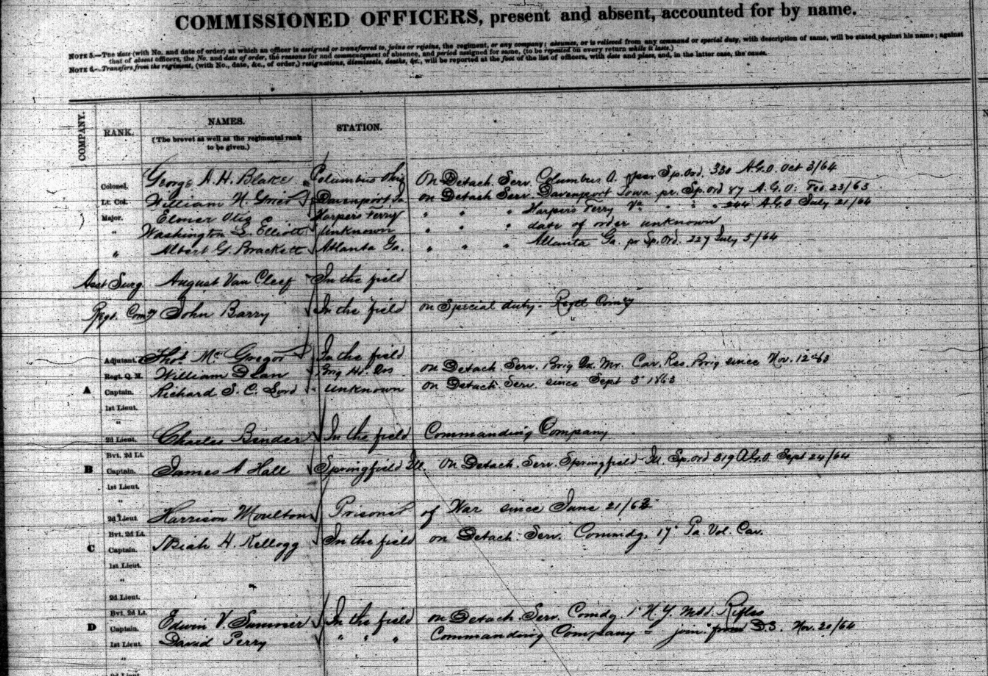
This section of the return shows the name of every officer and their present whereabouts, whether that’s commanding a company, on detached service elsewhere, or taken as a prisoner of war. The special order putting an officer on detached service is also frequently listed, but not always.
Alterations among enlisted men: This final section of the return accounts for all the changes in the enlisted men from the previous month by name.
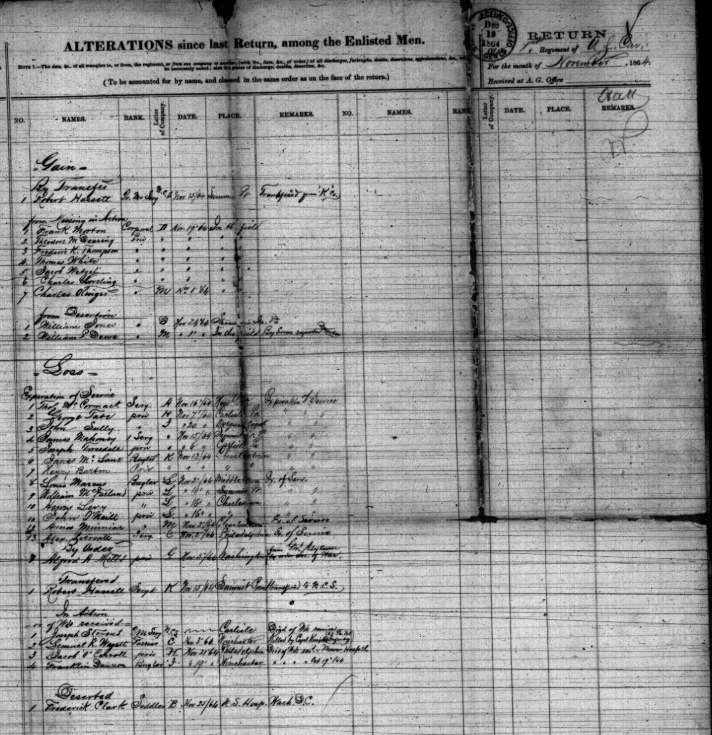
While the front of the return enumerated the gains and losses to the regiment numerically, the back of the form gives space for the individuals gained and lost to be written. Similarly to the front, the names are organized by gain and loss, and then subcategorized by the manner in which they left or returned to the regiment.
What if I have trouble reading a US Cavalry Return?
Reading US Cavalry Returns can sometimes be difficult given the small print and variable handwriting. Viewing the image in full screen mode and zooming in on one section at time can help make it easier to read.
If you still feel stuck, you can always send a transcription request and one of our librarians will get to work on transcribing the page and uploading it. You’ll also receive an email notification when the transcription is uploaded and ready to view.
To request a transcription, simply click the “Request Transcription” button at the top right of the page.
To see more of what the Research Arsenal has to offer, check out some of our other spotlights, like Edward Horatio Graves of the 10th Massachusetts Infantry and James Webster Carr of the 2nd New Hampshire Infantry.

